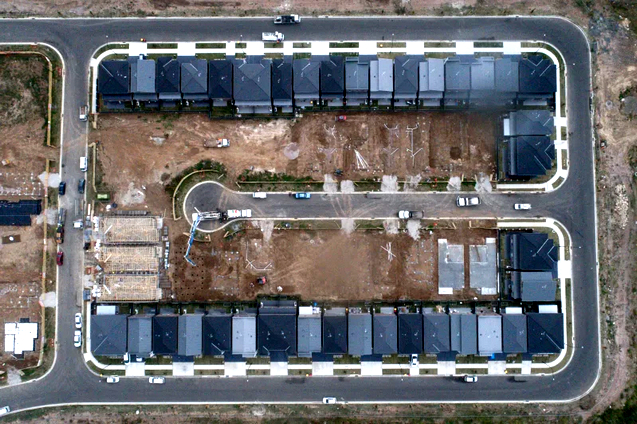To save the planet, we need to think more strategically, experts say.

|
Between a global biodiversity crisis causing the “unprecedented” decline of nature and a climate crisis sparking ever more extreme weather events, we are entering into an era where the future of planet Earth is increasingly in peril.
But as sobering as the data around the environmental degradation may seem, scientists still say there is hope to conserve Earth’s wildlife and save our planet from the climate crisis, according to a map published Tuesday in the journal Nature.
According to the research, by focusing on a few key areas of planet Earth, we can make big gains for biodiversity conservation, clean water, and carbon storage.
“Our map offers an integrated perspective on which areas of land would offer the greatest joint benefits for biodiversity, carbon, and water,” Martin Jung, a co-author on the study and a research scholar at the International Institute for Applied Systems Analysis, tells Inverse.
Necessary context
As the climate crisis worsens, scientists are increasingly calling for “nature-based solutions into climate mitigation strategies,” according to the Nature report. Likewise, a 2019 United Nations report suggests that global warming increases species loss, fueling the fire of the biodiversity crisis.
Earlier this summer, the Intergovernmental Panel on Climate Change (IPCC) and Intergovernmental Science-Policy Platform on Biodiversity and Ecosystem Services (IPBES) conducted a joint workshop addressing biodiversity loss and the climate crisis.
Scientists now recognize the need to work on these two issues — the climate crisis and the biodiversity crisis — together, highlighting how the two dilemmas are inextricably intertwined.
How they did it
To that end, researchers in the Nature study created a map highlighting specific areas of land around the globe that can help with the conservation of three elements essential for a healthy planet:
- Clean water
- Carbon storage
- Biodiversity

|
|
A map of the highest priority areas for biodiversity, water and
carbon conservation. Jung et al
|
Jung’s research team ranked high-priority areas of planet Earth based on their ability to conserve biodiversity, water, and carbon. The highest-priority areas received a rank between 1 and 10.
The scientists then generated a map flagging the highest priority areas for land conservation. These high-priority regions include:
- Southern China
- Madagascar
- Central America
- The Caribbean
- The Brazilian Atlantic forest
- The northern region of South America (Colombia, Guyana, etc.)
- Southeast Asia
- Congo Basin and parts of southern Africa
- European Russia
- Papua New Guinea
- The Mediterranean
- Parts of the western and southeastern US
- 42.5 percent of vertebrate and plant species (including 33.7 percent of all known plant species)
- 26 percent of total world carbon
- 22.1 percent of clean water globally
- 57.9 percent of vertebrate and plant species
- 60.7 percent of total world carbon
- 66 percent of clean water globally
We find that some areas in the world have much larger potential for retaining these benefits than others, which is important because it reflects that not quantity (e.g. how much land we should manage for conservation) but quality (e.g. which specific regions of land and how they are managed) really matters.Why it matters
Each of the three crucial factors that the report considers — biodiversity, clean water, and carbon storage — is increasingly in jeopardy as the climate crisis worsens.
- One in three people worldwide lack access to safe drinking water, and droughts linked to the climate crisis are worsening the situation
- According to a 2019 United Nations report, 1 million species are being threatened with extinction
- A more recent United Nations IPCC report finds that global temperatures will likely rise to 1.5 degrees Celsius above pre-industrial levels over the next few decades, based on carbon dioxide emissions in the atmosphere
“This is important now as we need to step up our efforts to combat both biodiversity loss as well as climate change and pursuit of these targets should not be done in isolation, but considered jointly,” Jung argues.

|
|
Baobab trees in Madagascar. Researchers identified Madagascar as
one of the high-priority areas for targeted conservation efforts to
improve biodiversity, clean water, and carbon storage. Getty
|
The new map provides a crucial action plan for targeted conservation as we head into a time of unprecedented environmental upset, requiring immediate action by world leaders and influential policymakers.
“In the context of international climate and biodiversity, this [map] offers a perspective and decision support tool,” for policymakers, large-scale investment funds, and businesses, Jung says.
The report is also timely because scientists are planning to adopt a new Global Biodiversity Framework during the 2022 Convention on Biological Diversity (CBD) in Kunming, China.
“The CBD's new proposed framework for post-2020 specifically highlights the integration of ecosystem-based approaches for climate change adaption and mitigation, and our work can help to identify where this could be possible while also meeting biodiversity targets,” Jung concludes.
Links
- Areas of global importance for conserving terrestrial biodiversity, carbon and water
- UN Report: Nature’s Dangerous Decline ‘Unprecedented’; Species Extinction Rates ‘Accelerating’
- UN climate report: 3 big findings you need to know ASAP
- Biodiversity and Climate Change
- Clean water and sanitation
- The climate crisis makes the water crisis worse
- First Detailed Draft of the new Post-2020 Global Biodiversity Framework







